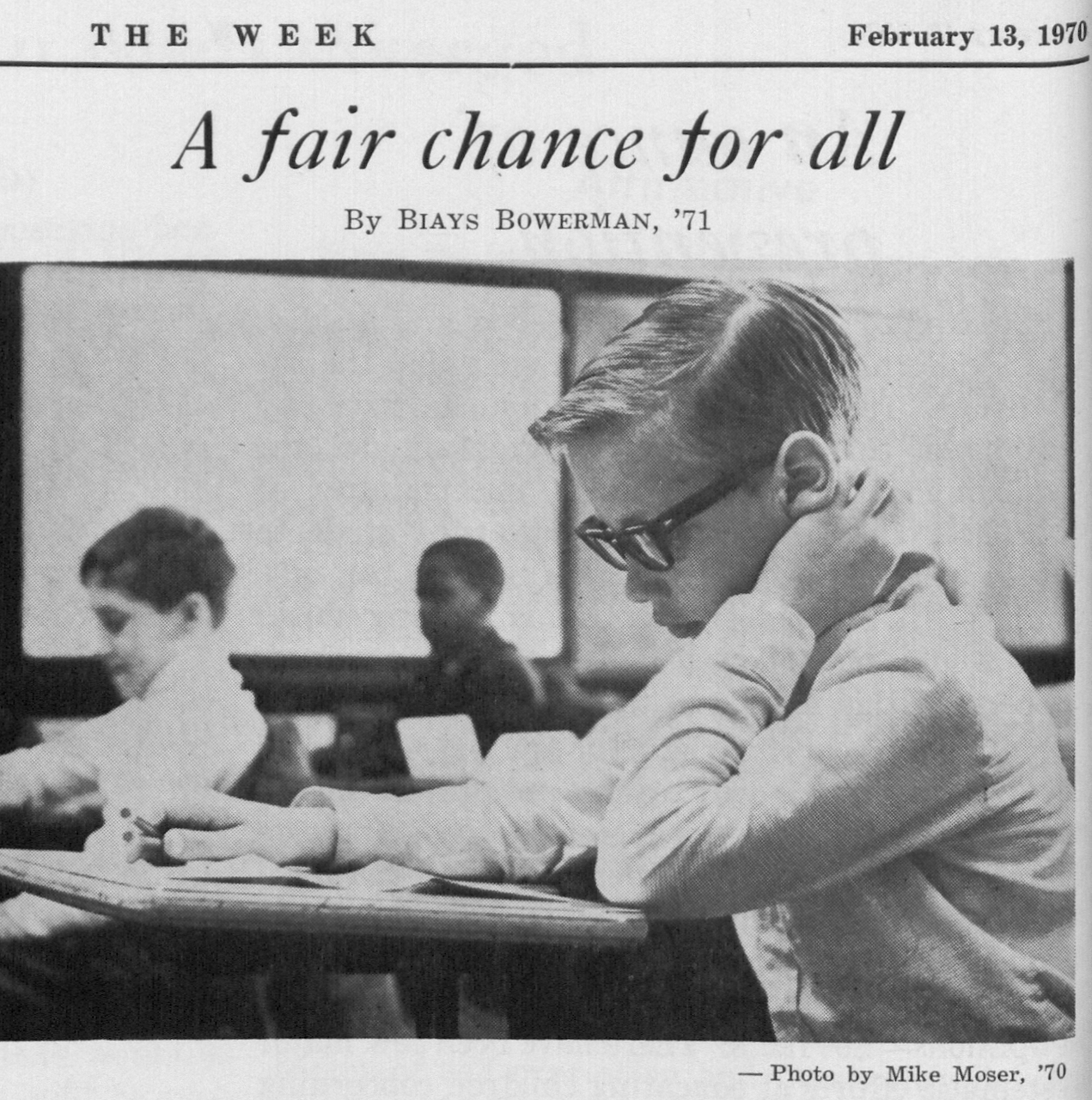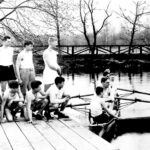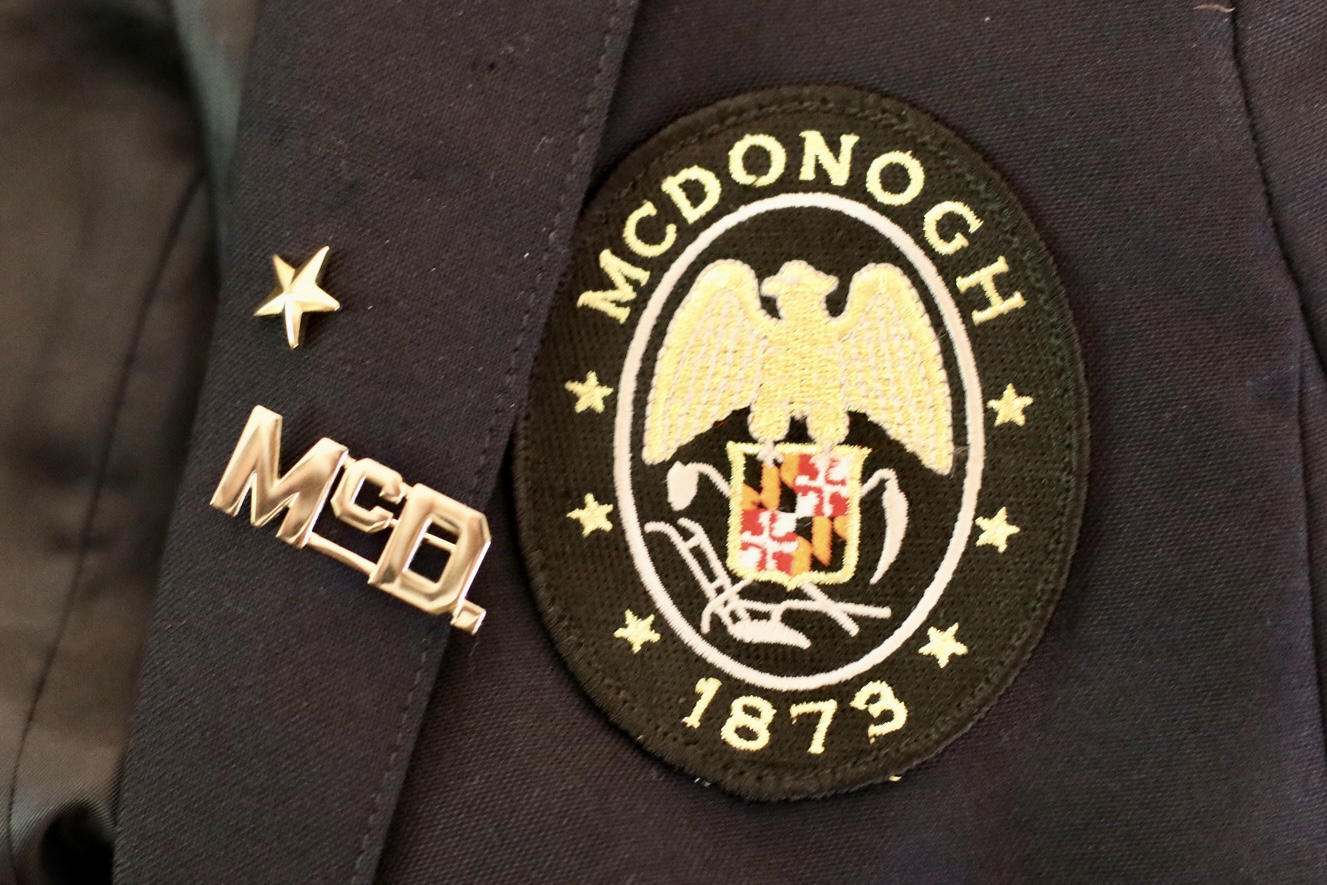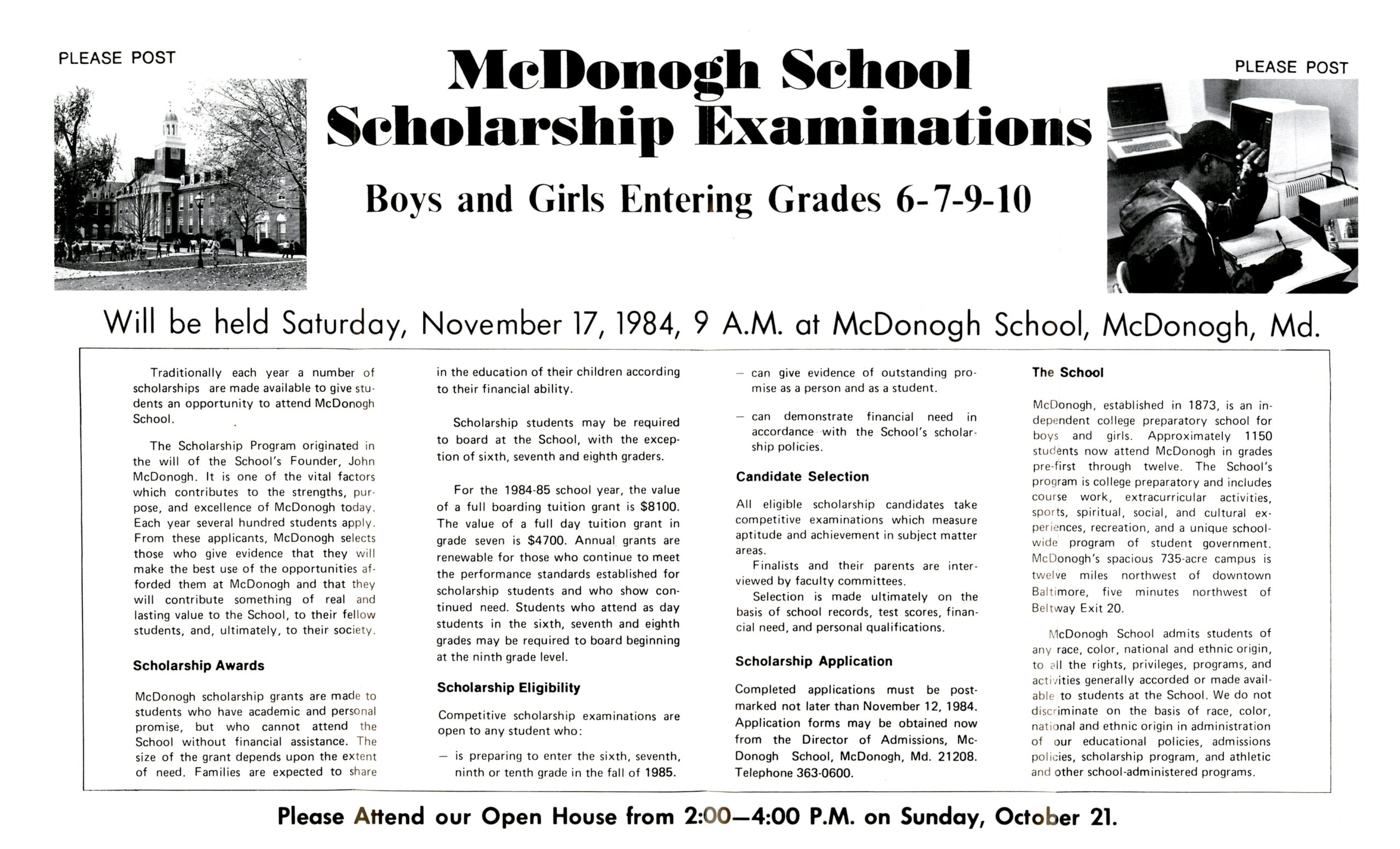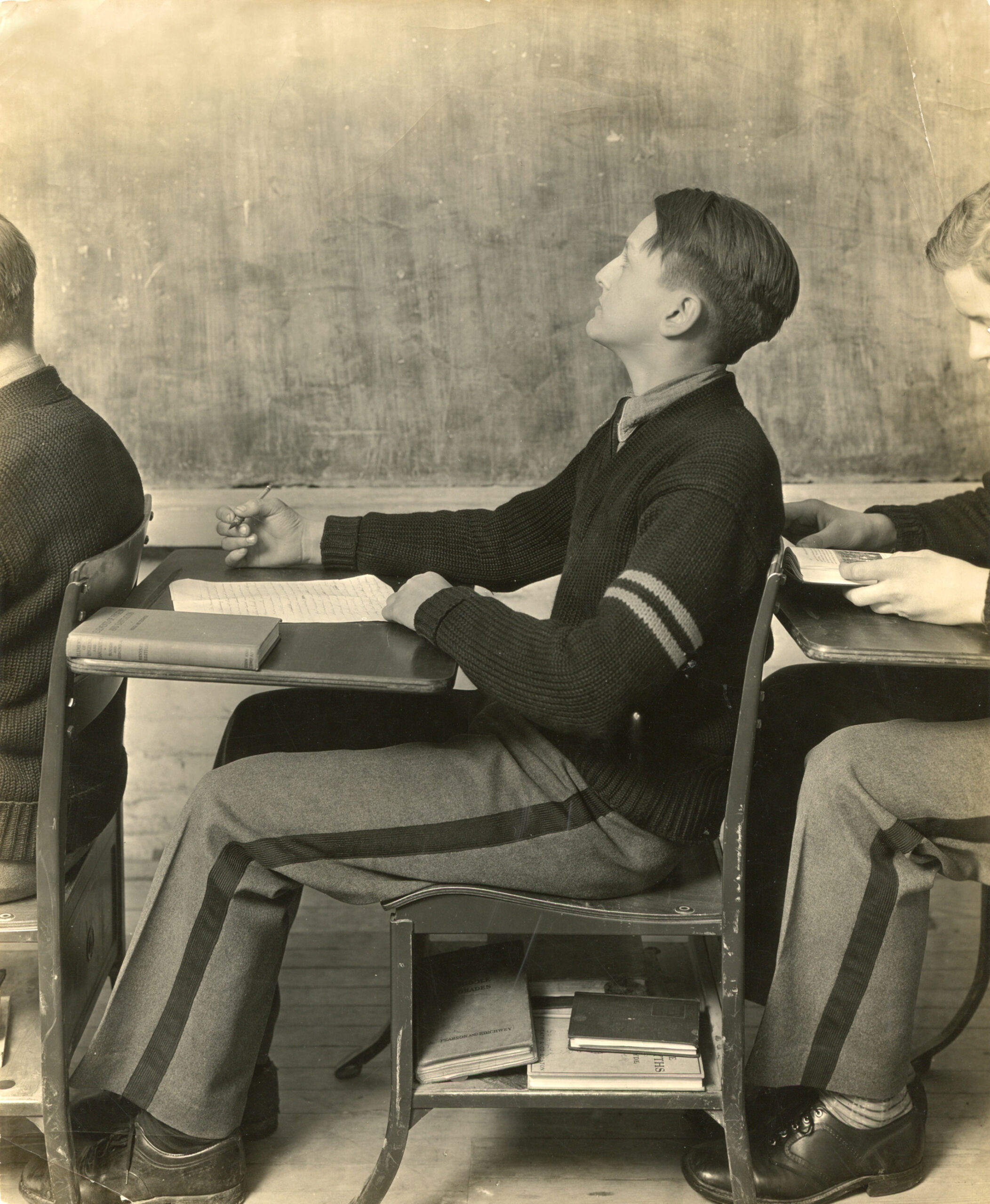The first call for applicants to McDonogh School was on Monday, October 1, 1873. At the time, the criteria for admittance included the following:
- No application will be considered by the Board of boys under the age of 10 years, and over the age of 15.
- Every application must give the full name and age of the applicant; and state in what part of the city he resides, and for how long a period he has resided in the city.
- The McDonogh Institute being designed as a home and school for the deserving poor boys of the City of Baltimore, every application must be accompanied by testimonials as to the good character of the applicant.
- The pupils who will be received into the Institute will be maintained and educated free of all expenses.
By 1881, the Board was facing an admissions dilemma. According to John McDonogh’s will, the school was intended for the poor, however, as Samuel Tagart noted in a report to the Mayor and City Council, “The most needy have the strongest claims and the best right to admission, but unfortunately they are frequently deficient in the necessary qualifications.” He added, It is apparent that the amount of knowledge which was sufficient to enable a boy to enter the School when it first commenced, would be insufficient at this time.”
In 1922, the first pay students were admitted, and those being educated under the terms of McDonogh’s will were called foundation boys. In 1929, Headmaster Doc Lamborn faced the same conundrum as Principal Allan did nearly 50 years before. He said he wanted the School to “achieve the greatest good to the greatest amount of worthy boys,” but it is plain that a “worthy boy” must have a certain capacity, both in terms of character and mental ability if he is to respond to the program in a productive way.
A May 1, 1937, article in The Week projected that 150 applicants would take the scholarship exam the following week. The report said, “Each year in May, examinations in English and mathematics are offered to worthy boys of Baltimore by McDonogh School. The ultimate result is a number of scholarships which are awarded to those boys considered most deserving and who have attained the highest grades on their tests. On Saturday, May 8, approximately 150 young men will arrive at school and take examinations. Later in the year, those whose averages have been highest will hear from some associate of the school and those who are selected will be given a scholarship valued at practically $1,000 per year. It will continue each succeeding year, until the completion of the course, as long as the recipient lives up to the standards of the school. Parents who accompany their sons during the morning, will be present at addresses to be given in Tagart Memorial Chapel by representatives of our Alumni Association and Investigation Committee.”
The upper and lower age range for admission shifted over the years, and in 1944, a resolution was passed by the Board regarding foundation boys. They included:
- Being a citizen of Baltimore (as long as it was possible to do so)
- The minimum age limit was 12 or the completion of sixth grade, and the maximum age limit was 16.
- There was no requirement for an applicant to be an orphan or half-orphan.
- All examinations were to be competitive as a way to rank applicants, and each applicant was considered on his own merits of need and worth.
- Examinations into the personality, scholarship, physical fitness, and previous school record were used to determine acceptability and probable success at McDonogh.
In 1962, the residency requirement for foundation boys was expanded to the State of Maryland. Furthermore, applicants were to have completed sixth or seventh grade, submitted affidavits from their current school, provided personal references, and given evidence of genuine financial need. After fulfilling these requirements and taking an entrance exam, applicants were interviewed by faculty who judged the likelihood of success.
In February 1970, The Week reported, “McDonogh’s annual scholarship examinations were held on Saturday, February 7. These tests were taken by approximately two hundred and fifty boys this year. Fewer than twenty of these candidates will eventually receive scholarships. At present, there are about 80 boys from grades seven through twelve who are receiving scholarship aid. Several generations of McDonogh students are grateful to the school’s generous program in which deserving boys can receive excellent educations.”
The following year, in addition to radio and television spots and posters announcing the tests, letters were sent to present patrons requesting information about prospective candidates. The Week reported that for the boys taking the scholarship exam, it would be “a day they will undoubtedly come to remember or regret. For on this day competitive examinations for scholarships to McDonogh School will be taken (quite nervously) by these boys. Taking the test is only the beginning, though. After proving his achievements in several subjects, the boy and his parents are interviewed by faculty members.”
The article described that while parents were being interviewed, the prospective student was asked to write a short essay. It noted that school records, test scores, financial needs, and personal qualifications were also fully taken into account. “The extent of the awards made is demonstrated by the fact that eighty-two scholarship students, in grades seven through twelve, receive a total of approximately $225,000, varying from partial to full tuition grants in excess of $3,000.”
Today, 150 years after its founding, student admission is from prekindergarten to grade twelve, girls and boys live in 127 different zip codes, and $7.1 million in financial aid or scholarship is given to those with need. Learn more about Admissions here.
